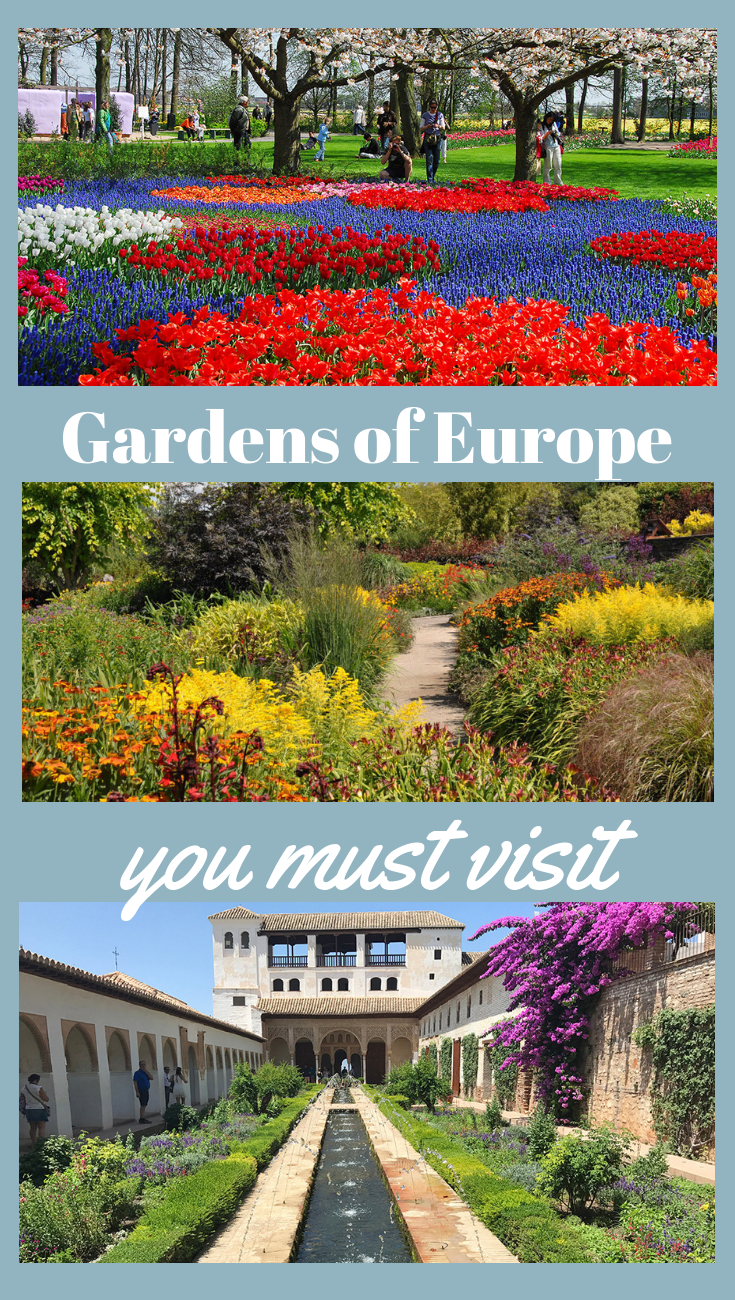Top Gardens of Europe
No matter where you travel to in Europe there will be a garden somewhere close by. Some are small and personal others are huge show gardens designed to showcase something specific. Still, others are the grand gardens of palaces, chateaux and villas. I take great delight in visiting gardens wherever I travel to and try to carve out time to visit at least one.
Here are are some gardens of Europe I would recommend. They cover a wide range of gardening styles and are just a few of my personal favourites from the many thousands there are to visit.
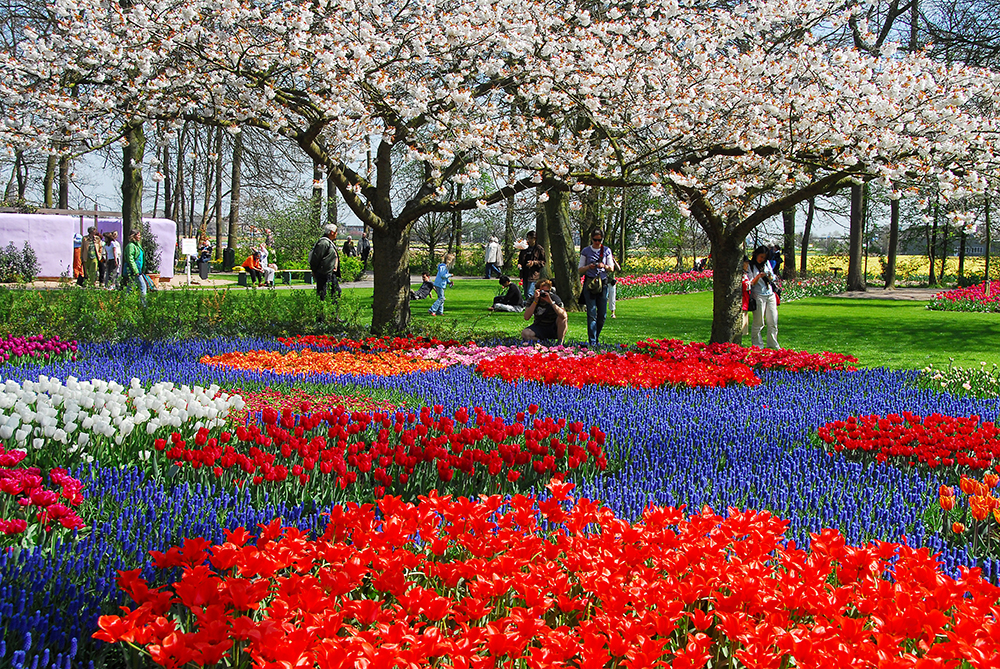
Keukenhof Gardens, Holland
One of the best and most colourful spring gardens to visit Keukenhof is a show garden for the bulb growers of Holland. As a result, it is only open for eight weeks from mid-March. The site is filled with flower beds crammed with tulips in all their multicoloured glory, narcissi and hyacinths along with other spring flowering bulbs.
Keukenhof is set in the middle of the Bulbfield District and, in spring, is surrounded by a patchwork of multi-coloured fields. There are several windmills dotted around the landscape, perfect for that quintessential Dutch scene of tulips and windmill.
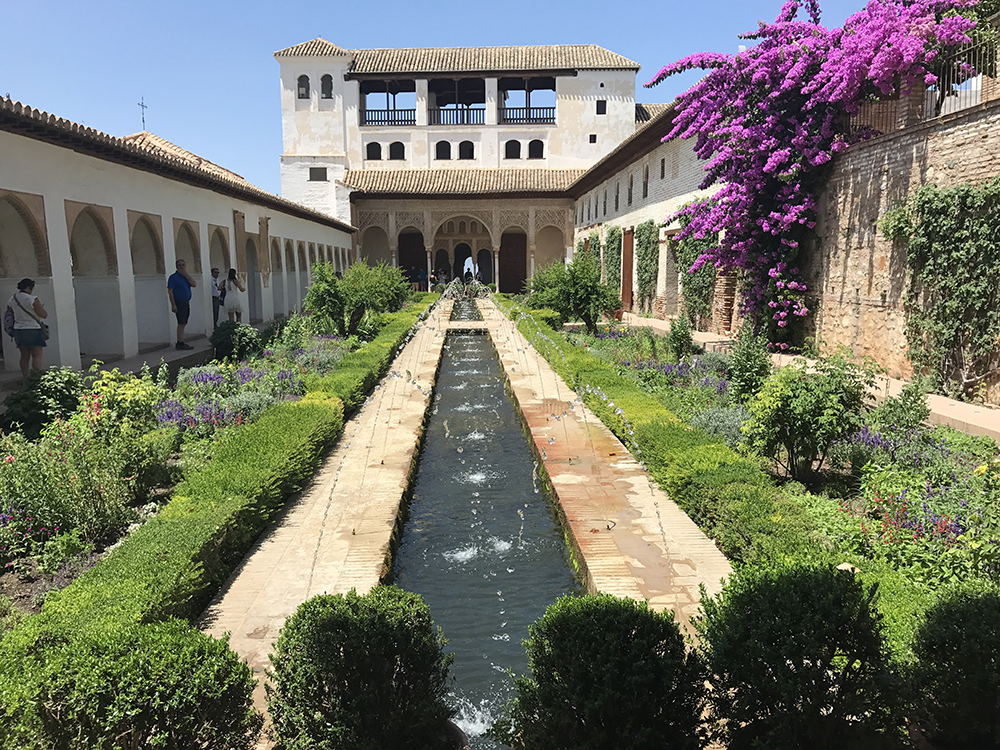
Generalife, Granada, Spain
The Alhambra Palace is one of the greatest examples of Moorish architecture in Europe. Attached to the palaces is the Generalife or pleasure gardens. It was where the Moorish rulers would retire to escape the bustle and political machinations of court.
The gardens are a fine example of Islamic thinking of representing paradise and this always meant the inclusion of water features. Full of rills, fountains and ponds the gardens of the Generalife are still a tranquil place to be despite the tourist crowds. In addition to all the water, there are gardens full of perfumed flowers. Bougainvillaea and wisteria decorate the walls in season while roses and other flowering plants adorn the gardens secluded courtyards.
To avoid disappointment tickets must be booked online in advance as numbers are limited each day. Visit in early summer for the best experience.
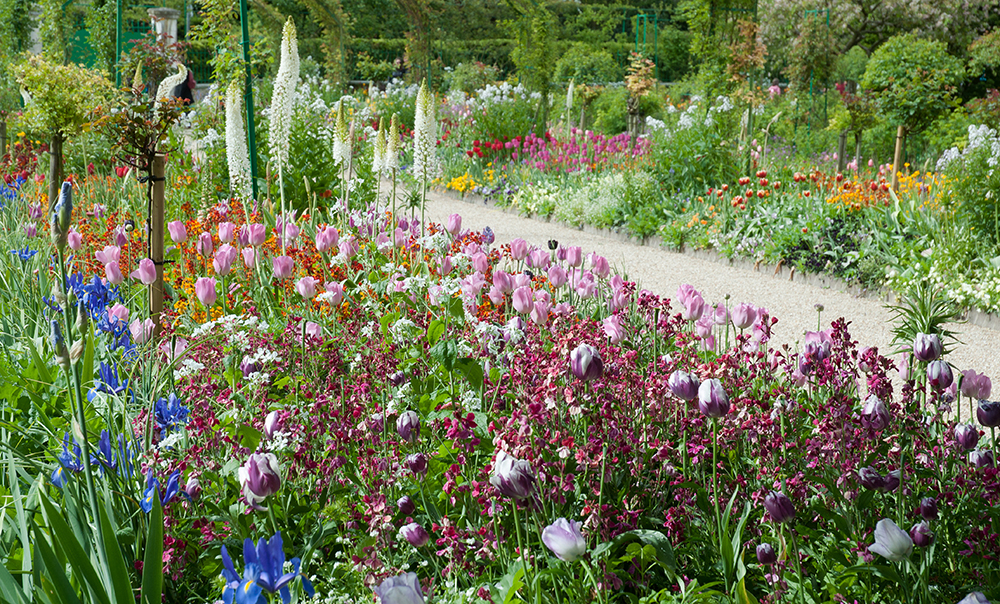
Claude Monet’s Garden, Giverny, France
The Impressionist artist Claude Monet claimed his greatest creation was not one of his paintings but his garden in the village of Giverny. Best known for the lily ponds which he painted over and over again it is, however, far more extensive. He designed the gardens to give constant colour throughout the year.
Monet loved to record the interplay of light and the seasons in his paintings and the garden provided him with plenty of subject matter. His famous lilies series is an example of this fascination with light and colour.
The best time to visit depends on the plants you want to see. Personally, I prefer late spring and early summer.
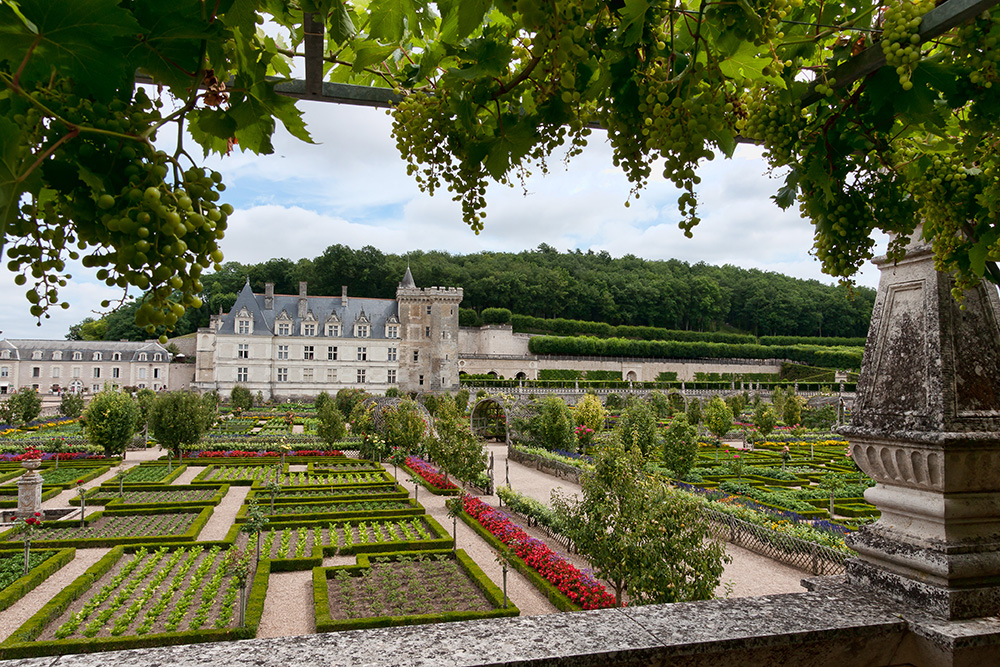
Jean-Christophe BENOIST [CC BY 3.0], via Wikimedia Commons
Chateau Villandry, Loire, France
The Loire Valley is noted for its many Chateaux many of which have stunning gardens. I chose Chateau Villandry because of its fine example of Renaissance formal gardens in France. There are six formal gardens in all, each one laid out in a symmetrical manner.
There is a water garden with fountains and ponds, an ornamental garden of clipped box hedges forming intricate patterns and filled with flowering plants according to the season and a formal vegetable garden laid out in a series of nine squares. Although all six gardens are special it is the ornamental vegetable garden that is the most famous.
Summer is the best time to visit.
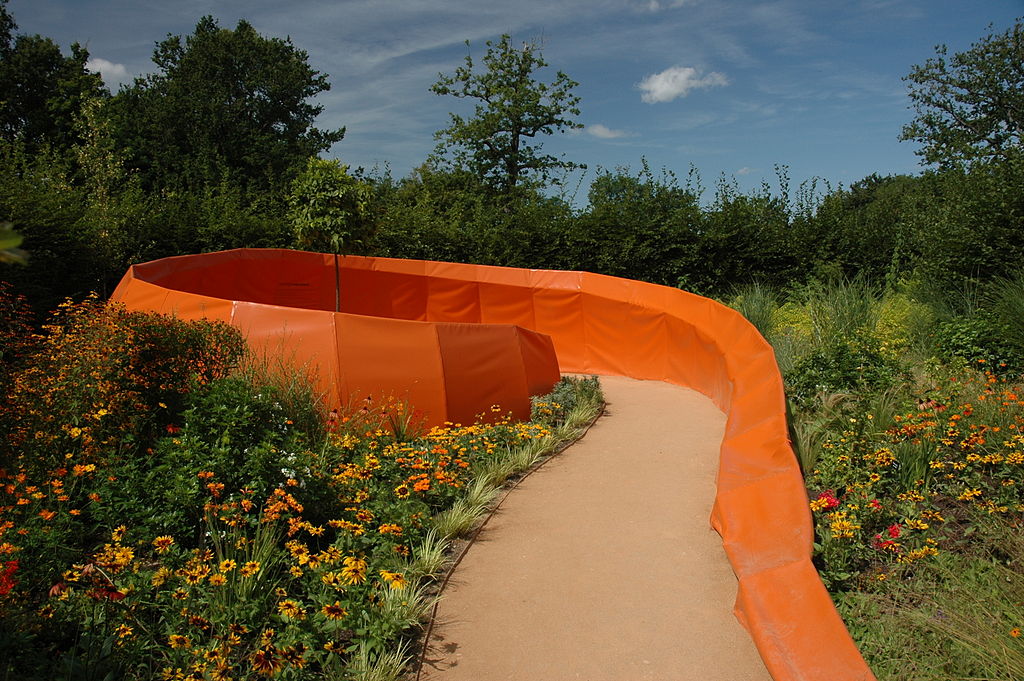
[CC BY-SA 3.0], via Wikimedia Commons
Just down river from Chateau Villandry are the gardens of Chateau de Chaumont. Every year there is an International Garden Festival in the extensive grounds of the chateau. Each year designers compete to design around 30 or so gardens on a set theme. It’s a bit like a Chelsea-Flower-Show-on-the-Loire but with the advantage that the gardens are open from mid-April to October.
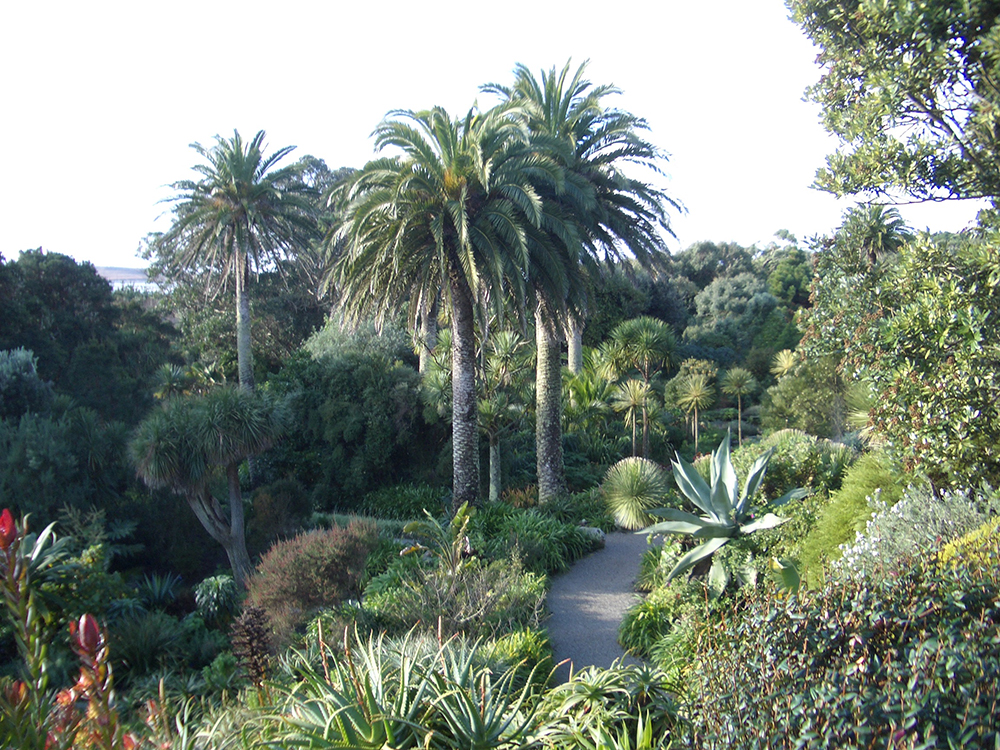
Andrew R Abbott at English Wikipedia [Public domain], via Wikimedia Commons
Tresco Abbey Gardens, Isles of Scilly, UK
As a result of sheltering walls, a mild climate and long hours of sunshine the Tresco Abbey Gardens have their own microclimate. Exotic plants from every continent on the planet (Antarctica excepted) thrive here. The gardens, originally private, were built in the grounds of a ruined Benedictine abbey.
Often referred to as ‘Kew without the glass’ it is home to thousands of species of plant. Spring flowering plants and shrubs appear earlier than on the mainland of Cornwall and Autumn lasts well into winter. It is said that there are 300 species of plants in flower at the winter solstice.
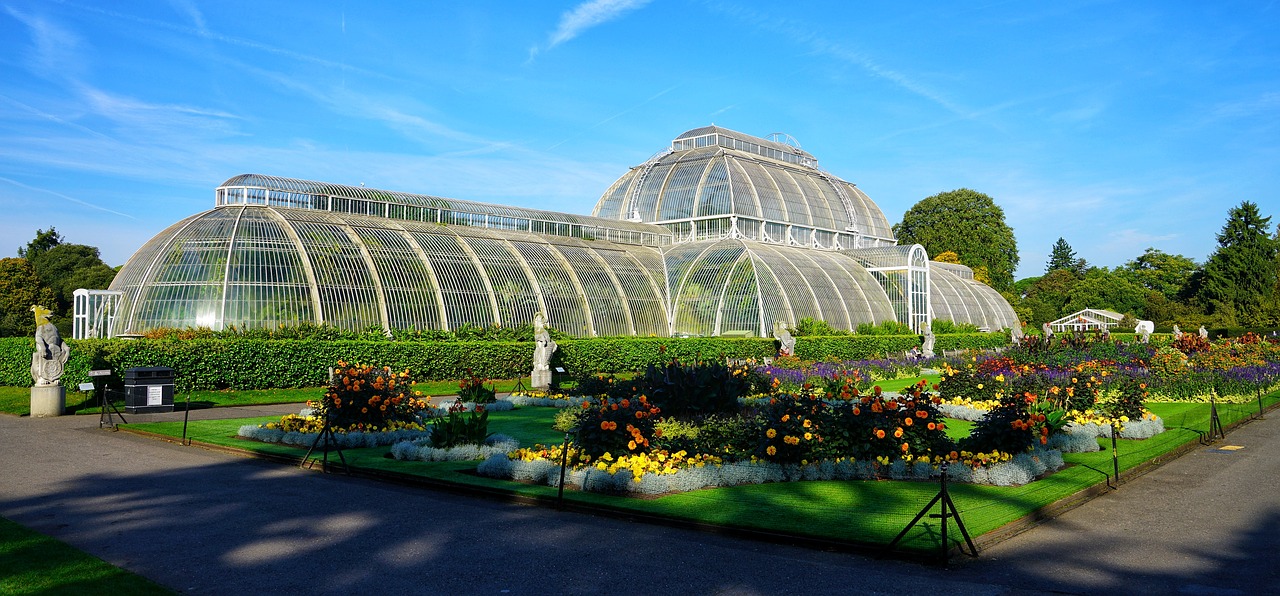
Kew Gardens, London, UK
Kew Gardens are an internationally renown research establishment and botanical gardens. Set up in the age of the Victorian plant hunters its glasshouses reflect its heritage. However, it has kept pace with the times and there are several modern buildings including the treetop walkway and the Princess of Wales Conservancy.
Apart from the many plant collections housed in the conservatories and the iconic glasshouses, there are gardens and borders filled with plants and shrubs. Kew is definitely an all seasons garden however, it is most resplendent in spring and summer.
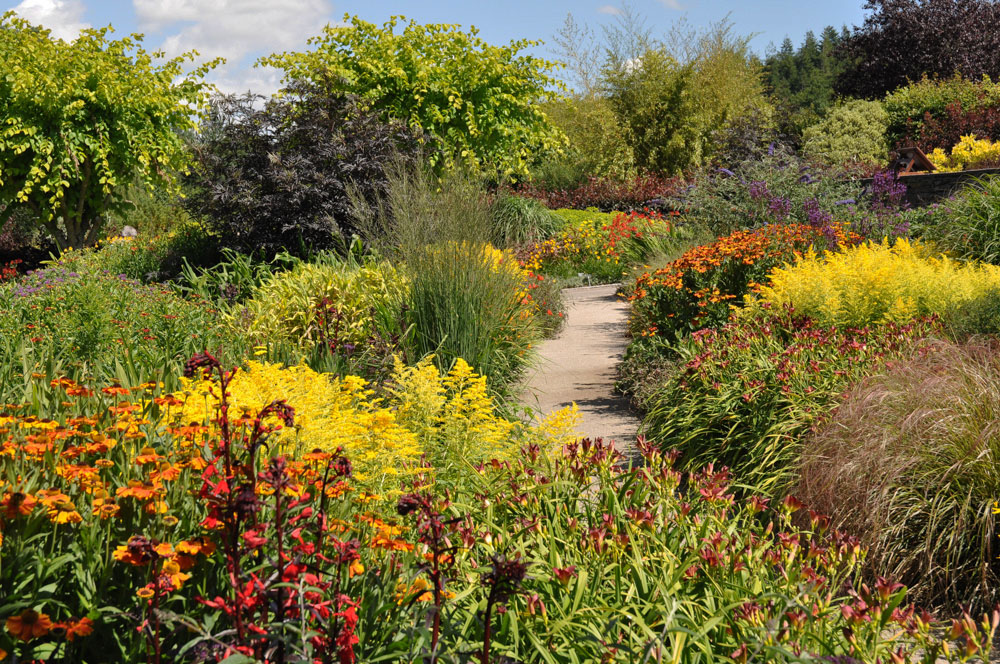
The RHS Gardens, England
The Royal Horticultural Society maintains four gardens across the UK showcasing garden design, planting and plants. Each has their specialities and features but all aim to provide year-round interest.
Wisley in Surrey is known for its impressive mixed borders and woodland and rock gardens. Rosemoor in Devon is noted for its Hot Garden and the collection of scented roses. In Essex, Hyde Hall has extensive views and is best known for the Dry Garden. Harlow Carr in North Yorkshire has fine examples of wildlife meadows, woodlands and stunning borders.
There literally thousands of gardens across Europe that can be visited. Many stately homes, numerous chateaux and hundreds of palaces show off with stunning gardens. Some took in the countryside and developed into great parks others were far more formal and sought to control nature. I feel travel and a visit to gardens go well together.
An edited version of this post was published on the Avanti Insurance Travel Blog.
Pin It
If you enjoyed the post then I would be grateful if you would pin the graphic below on Pinterest so that others can read and enjoy it. Just click on the little red button in the top corner of the picture. Thank You
